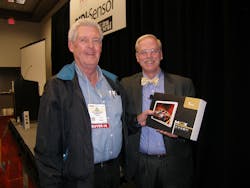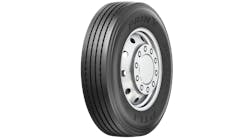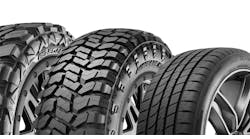“How can I help you?” That question is the time-proven first step in engaging a customer in a conversation that will lead to a sale. Or is it?
If your people are asking this question when they approach a customer, they’ve likely lost the sale, according to Karl Stearns, president of KMS Marketing Solutions.
“Asking how you can help lets the customer control the conversation,” Stearns told dealers during “Improving Sales and Profits,” a Tire Industry Association-sponsored educational session held during the Global Tire Expo portion of the Specialty Equipment Market Association (SEMA) Show in early November.
Sales people should be asking customers: “What brought you here today?” But Stearns says no one asks that question.
“If you demonstrate to customers that you are actually concerned about why they are there to do business with you instead of just taking an order from them, you are going to find your relationship with those customers will get very strong,” he said. “They will come back to you before they think of going anywhere else.”
He followed up with a question for dealers: “Wouldn’t you like to know why they chose your store?”
The FUD factor
Stearns explained that everything taking place at the sales counter comes down to an interaction between two people. “You have to think about what’s going on in this whole process. Marketers call it FUD: fear, uncertainty, and doubt.”
Fear of a tire failure may have pushed the customer to a tire store. “They are uncertain your store is the best place to go. They may doubt the person they are dealing with. You have all of this going on in a person’s head while they are trying to transact business with you. Your counterperson is dealing with the same things while they interact with your customer,” said Stearns.
“You may think this is a friendly transaction. For the most part it is. But don’t ever underestimate the fact that every customer that comes through the door has all kinds of doubts about doing business with you,” he said.
The PIPA process
To help overcome customers’ doubts and uncover their real need, Stearns advises a four-step approach to sales: present, interview, propose and adjust, or PIPA.
In the “present” step, the sales person and customer get to know each other. The sales person checks the store’s records and acknowledges the customer has been there before by mentioning a previous service date and the service performed. This interaction is the first step to establishing a conversation that uncovers the customer’s real need, according to Stearns.
Without the “interview” step, a dealer misses opportunities to sell other products and services. “Nine times out of 10, your customers don’t know about all the things that you sell. Once they’re made aware of it, they have an opportunity to do business with you.”
Stearns said the interview process takes 30 seconds to a minute. When a customer says he came to the store because he needs to replace a tire, the salesperson needs to ask what is happening with the car.
The customer may say he feels a vibration. “Now they are starting to give up all the information you need, and you find out there’s a lot you can do to help them,” said Stearns.
The customer may say he wants to make sure the car is mechanically sound before a vacation. “You may have things in your store that you could sell them for the trip. This interview process is so critical to uncover what the customer really needs.”
The third step is for the salesperson to “propose” what he or she can do for the customer. “You may have a bunch of things you want your customer to be aware of, and they may say they don’t want to spend money on that. It’s a negotiation,” said Stearns.
The negotiation leads to the fourth step, which is to “adjust” what’s been offered and reach an agreement.
“Rather than the customer coming in to buy four tires, you’ve been able to offer a lot of other suggestions that are beneficial to them. But you don’t get to that point unless you spend the majority of your time in the interview process,” said Stearns.
The organizers of the SEMA Show and Global Tire Expo also arranged for a marketing expert to share insights with tire dealers at this year’s event. For MTD’s coverage of the marketing seminar, new products and other SEMA Show activities, see our story online and in the December digital or print edition, beginning on page 22.



